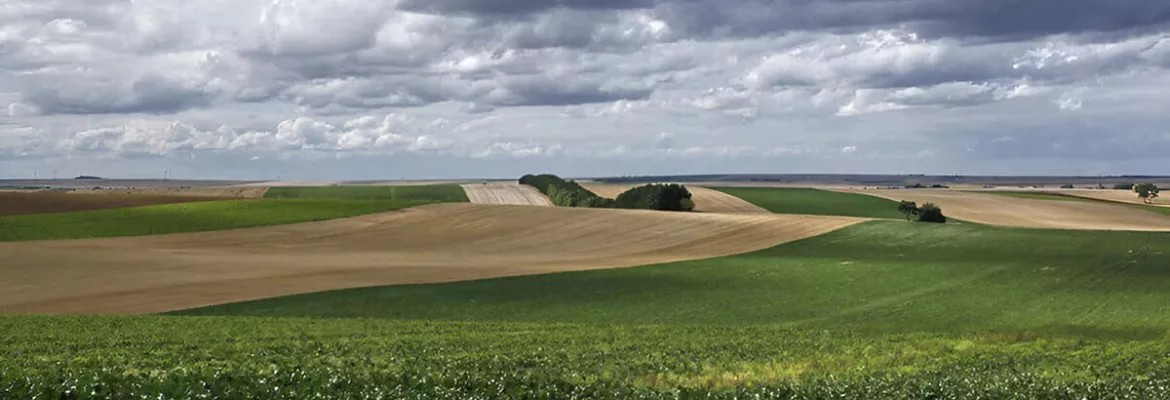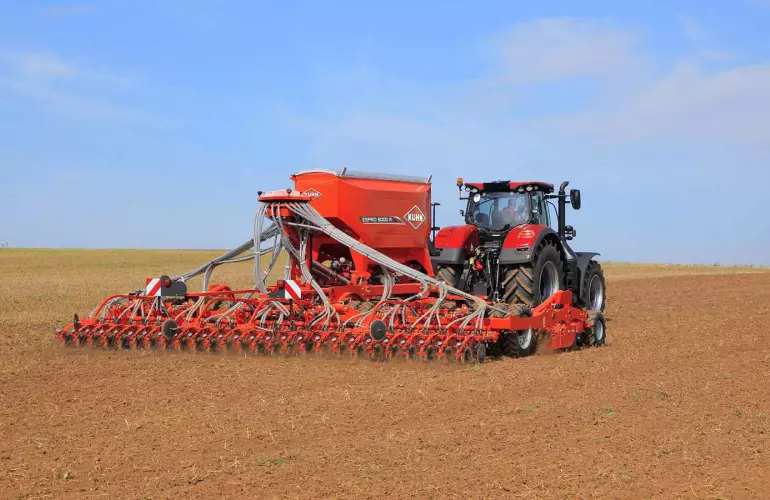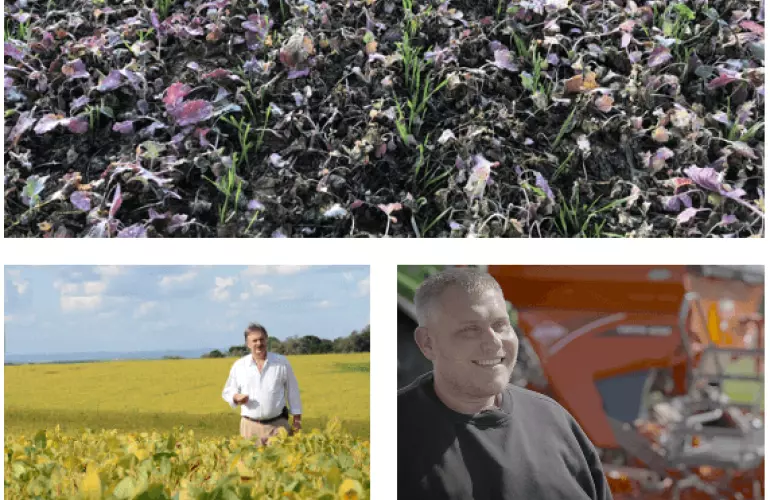
Minimum cultivation techniques are adapted to most field crops, although spring crops can be tricky.
Consider soil-type, the previous crop, the region, the climate, and your organisation
Minimum cultivation methods differ from direct drilling by being more "universal", i.e., they can be used in many situations. Each field should be treated according to its specific characteristics, including past crops, soil type, weather conditions, the crop to be planted, as well as the organisation on the farm, including equipment, and time available for seeding. Min-till requires less labour than traditional seeding with the plough. It is also cheaper in terms of fuel usage.
Min-till is more suited to light soils
As the aim of tillage is to obtain as fine a soil as possible to allow the seeds to germinate, min-till seedbed preparation is easier in light soils where shallow work is sufficient. On the other hand, in heavy clay soils, such as in Lorraine for example, it may be advisable to use the plough to restructure the soil, allow the frost to take effect, and then prepare a fine seedbed using a power harrow or similar method.
Cereal crops are well suited to min-till.
In theory, all crops can be seeded using min-till methods, however, cereal crops, and autumn crops in general, would seem to be more suited to these techniques. Indeed, after stubble cultivation in the summer, seeding can be carried out at the end of the summer using a seed drill combined with a tillage tool such as a stubble cultivator (from KUHN’s ESPRO range for example). In terms of weed control, this type of tillage is similar to conventional seeding methods with a plough followed by shallow work, as the organic matter remains in the surface layers.

Min-till methods are less often employed for spring crops because it is trickier to make it work. Crops like maize and sunflower require fine, airy, and warm seedbeds to allow the seeds to germinate quickly, making sure they get a good start, while limiting competition from weeds. The presence of plant-cover residues can also be a handicap for these crops. Given the nature of a min-till seedbed (coarser than sowing after the plough and power harrow, for example), this technique is virtually absent from beet sowing, a crop that requires an ultra-fine seedbed.
Nevertheless, in regions of Central and Eastern Europe, as well as in France, min-till is sometimes used for spring crops for economic reasons. The final choice is always with the farmer, who decides based on agronomic and environmental objectives, as well as economic constraints, since the choice of a technique (min-till, ploughing) is not exclusive to the farm or rotation.

What are the ideal conditions for seed germination?
- The topsoil: clods that are not too big in order to ensure good resistance to slaking due to rain and winter frost while not being an obstacle to fast seedling emergence;
- A few centimetres down (5-6 cm maximum): a mixture of fine soil and small clods to ensure good contact between the seed and the soil and a sufficient supply of water for the seed and young seedling. Well-covered seeds are also less exposed to birds and especially slugs;
- Beneath the seedbed, a layer of soil with clods of varying size, packed without smoothing, and without cavities, which should initially allow the seedbed to drain off any heavy rainfall and subsequently allow roots to develop freely.
Good to know: Min-till can be trickier with spring crops
